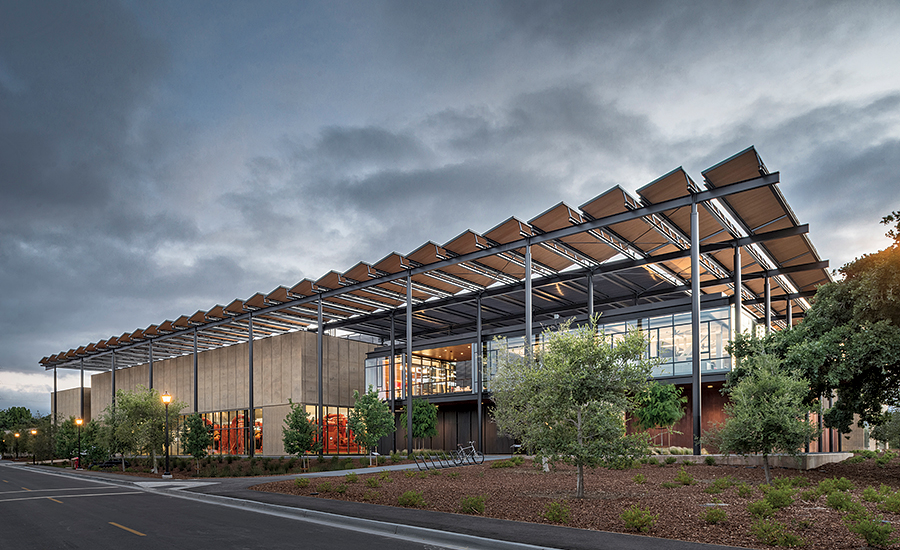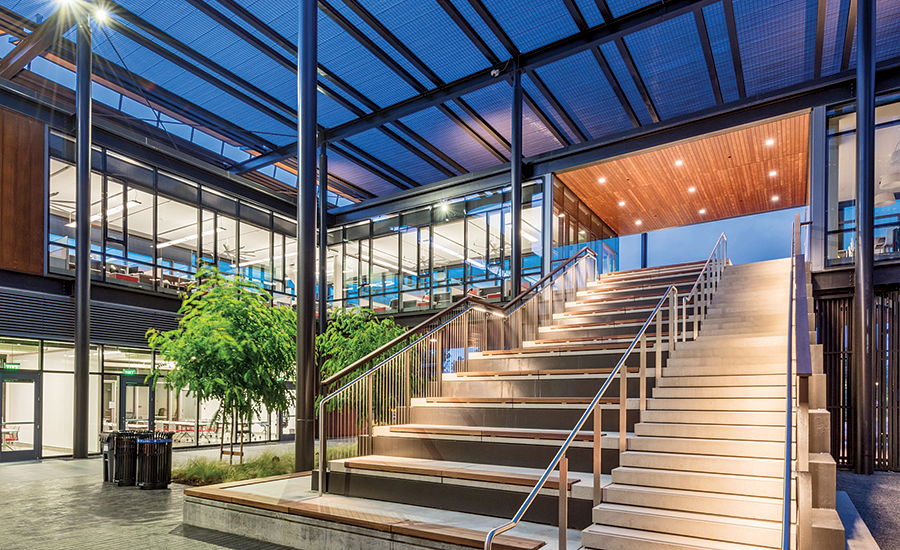PROJECT INFO
Completed on time in March and on budget, the $380-million project at Stanford University includes high-efficiency new-building standards and improvements to existing buildings, a high-voltage substation, state-of-the-art solar arrays and a new central energy facility (CUP) that incorporates the largest heat-recovery chillers ever installed in the nation.
The CUP circulates hot water to heat buildings and cold water to cool them, each in a closed loop so the water won’t need constant replacement. The cold water gradually heats as it travels through the campus, returning to the CUP 14 degrees warmer than when it left. Equipment within the facility strips that heat from the cold water pipes and adds it to the hot water pipes.
Crews placed, welded, insulated and backfilled 20 miles of underground hot water distribution piping. Ultrasonic testing verified 4,000 welds, and pipes also underwent hydro-testing.
In addition, a total of 130 Stanford campus buildings were converted from steam to more energy efficient hot water. More than 40 concurrent running jobsites and 30 to 40 utility shutdowns occurred weekly for 14 months without unplanned utility outages. Construction also did not impact adjacent pedestrian and bicycle traffic on the active campus.



